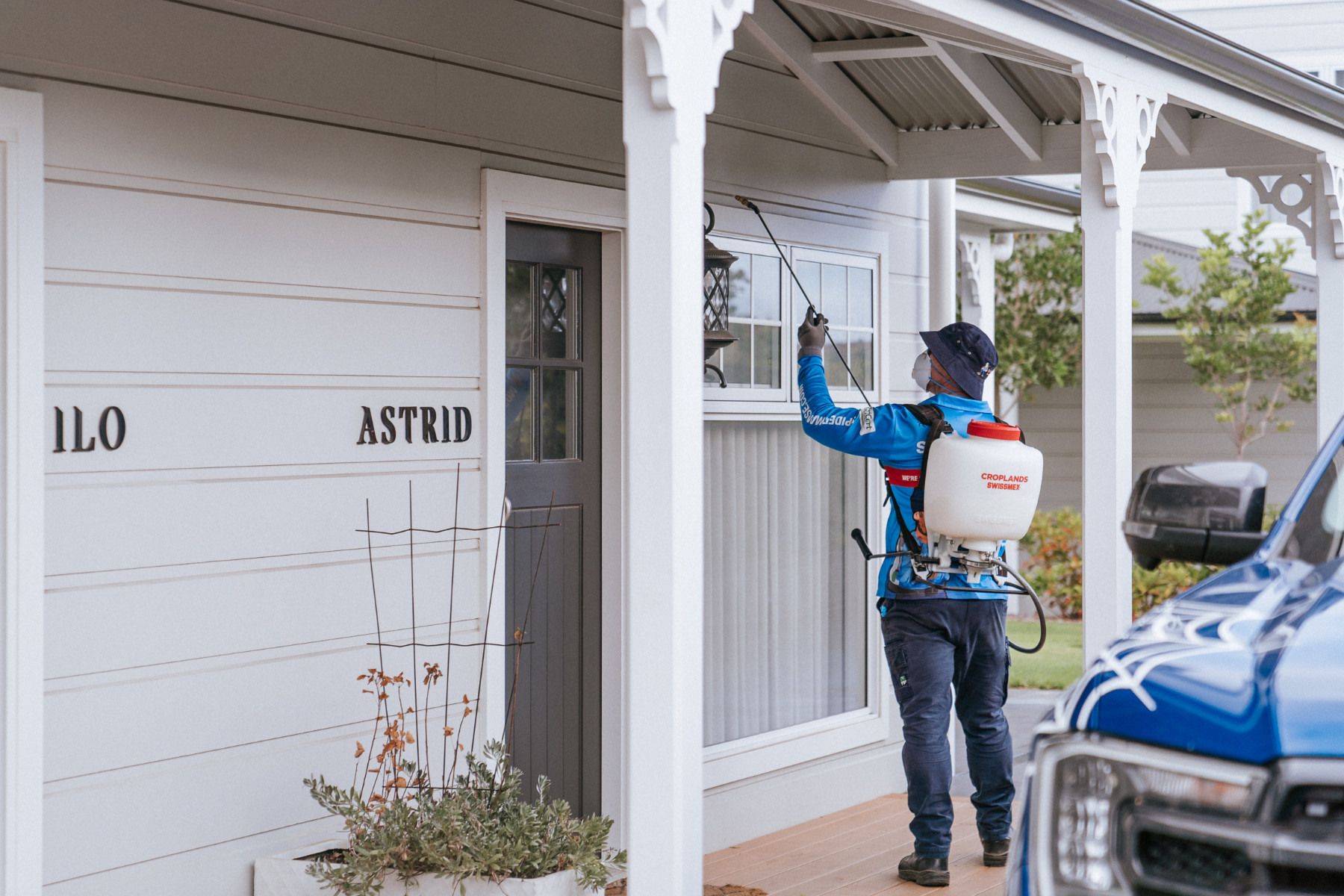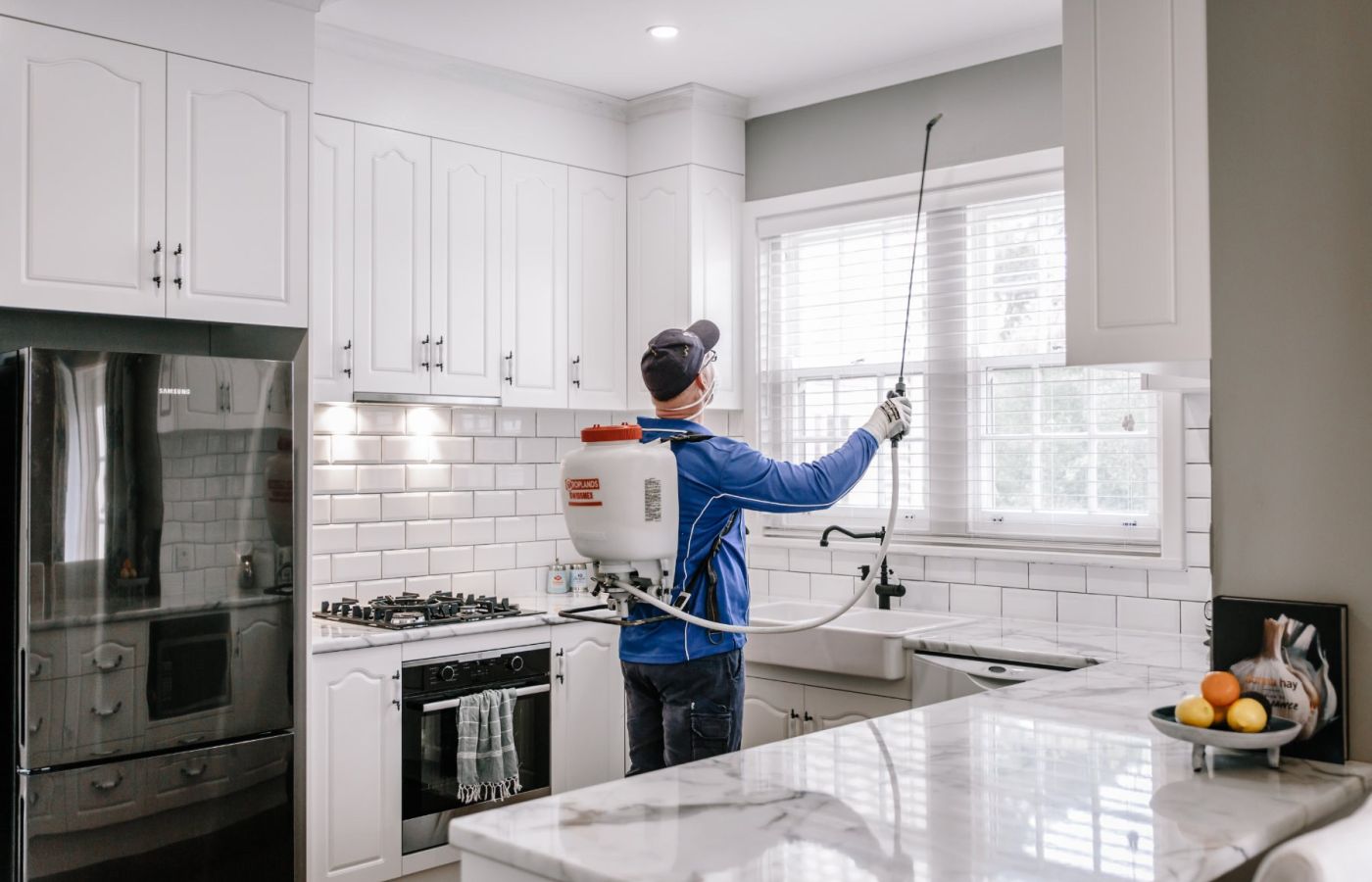
Unfortunately, those claims are often misleading. The truth is, good pest control is not about throwing chemicals at a problem. It starts with proper Integrated Pest Management, which means looking at hygiene, housekeeping, food sources, moisture, access points and maintenance first. Exclusion and prevention always come before any product is even considered.
Chemicals are never our first line of defence. They are simply one tool in the kit and are used only when needed, applied safely, correctly, and legally by trained, licensed technicians.
All pest technicians use the same pest control toolbox
Here’s something most people don’t know: every qualified pest control technician in Australia draws from the same set of registered products. These are approved and regulated by the Australian Pesticides and Veterinary Medicines Authority (APVMA) - the government body that ensures everything we use is tested, monitored, and safe when handled correctly.
Among the usual suspects in our professional toolkit are bifenthrin, deltamethrin, and beta-cyfluthrin, which are all part of the pyrethroid family. We also utilise imidacloprid, a neonicotinoid compound used in certain controlled environments. Each of these active ingredients works differently, but they all have one thing in common: they’re approved, tested, and designed to protect you without causing unnecessary harm when used properly.
“Natural” doesn’t always mean “Better”
Pyrethroids might sound intimidating, but they actually have natural roots. They’re synthetic versions of pyrethrins, a compound found in chrysanthemum flowers. Pyrethrins are great for fast-acting results but tend to break down quickly in sunlight or rain. In other words, if you only used natural pyrethrins, your pest control would last about as long as a bunch of flowers bought from a petrol station - a few days, maybe a week if you’re lucky.
That’s where pyrethroids come in. They’re engineered to be more stable and longer-lasting, providing ongoing protection even after the spray has dried. So, while they’re not “natural” in the flower-power sense, they’re safe, effective, and sustainable when applied correctly.
What about Imidacloprid?
Then there’s imidacloprid, which belongs to a different chemical family - the neonicotinoids. This product is incredibly effective indoors against pests like ants and spiders, particularly in spaces where discreet treatments are needed without strong odours or visible residue.
However (and this is crucial) imidacloprid should never be used outdoors. It can harm bees and other pollinators if sprayed on or near flowering plants. That’s why at Spiderman SE, we stick to the rules: imidacloprid must be used strictly according to the label. No cutting corners, no spraying near pollinators, and definitely no “just this once” exceptions.

Why labels matter (more than you think)
Every product we use comes with a detailed label outlining how, where, and when it can be used. These aren’t optional guidelines. They are legal directions designed to protect people, pets, and the environment. Labels specify everything from protective gear to re-entry times and even which surfaces can be treated.
The products we use are regarded as low in toxicity and pet-safe… but only after they’ve dried. Until then, pets and people (especially those with allergies or respiratory sensitivities) should steer clear of the treated areas. Once dry, the product adheres to the surface and poses no risk, making modern pest control both effective and responsible.
Unfortunately, not every company follows these directions to the letter. Some will tell you there’s no need to move pets or wait, which isn’t just careless, but also unsafe. We always take the time to do it right because following the label isn’t bureaucracy - it’s basic safety.
Doing pest control properly (even when it’s not the easy way)
We’ll admit, doing things properly takes a little extra effort. It means more preparation, more communication, and sometimes, a little extra time on-site. But that’s the only way to ensure everyone, including you, your family, and your fur babies, stays safe.
Cutting corners might save a few minutes, but it can also damage the reputation of the entire pest control industry. At Spiderman SE, we take pride in being professionals, not pretenders. Because at the end of the day, the safety of a treatment isn’t about what you use - it’s about how you use it.
Transparency Builds Trust
We believe you have the right to know exactly what’s being used around your home, which is why we’re always transparent about our products. We’ll tell you the product names, explain why we’ve chosen them, and outline any precautions needed.
We don’t hide behind buzzwords like “chemical-free”. Instead, we rely on facts, clear communication, and professional integrity. The APVMA-approved label isn’t just a sticker on a bottle to look pretty - it’s a safeguard, a piece of science-backed trust that guides every decision we make.
So next time you hear a company say their treatment is “totally safe for pets” or “all-natural,” don’t be afraid to ask a few questions:
- What’s the product name?
- Is it APVMA-registered?
- Do I need to leave the area while it dries?
If they can’t answer confidently, you might want to reconsider who’s handling your pest control.
The Spiderman SE Difference
At Spiderman SE Eco Pest Management, we don’t do shortcuts, and we definitely don’t do “magic sprays.” We do things the right way, safely, with transparency, and professionally. Because keeping people, pets, and the planet safe isn’t just part of the job - it’s the whole point.
After all, we’re saving the world, one pest at a time and doing it properly.
More about our professional pest control and pest treatments

